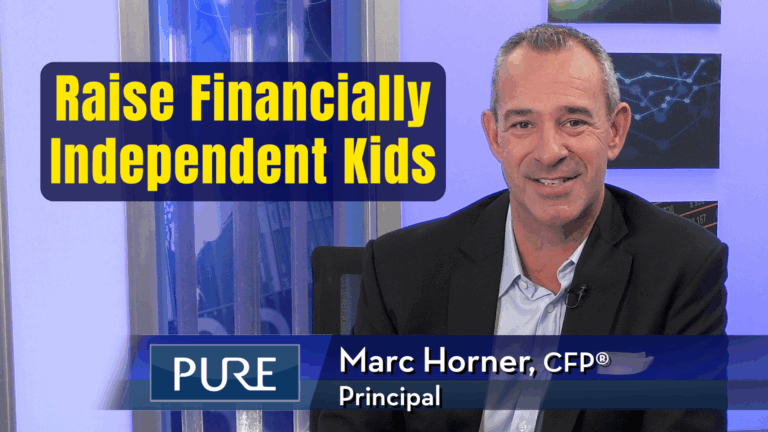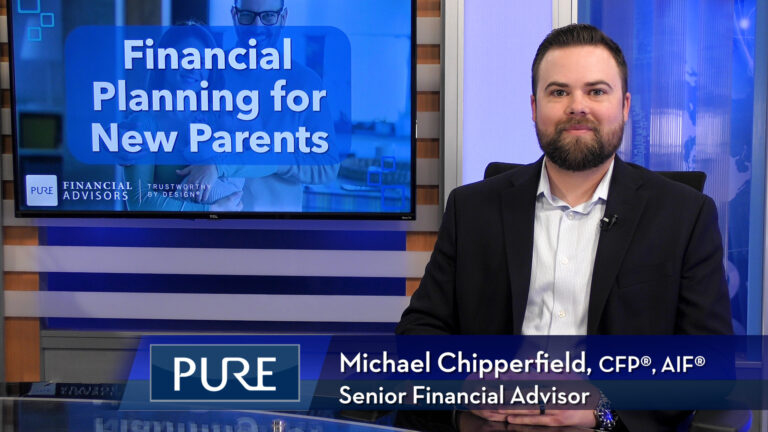Election years can be stressful, as shifts in political leadership have the potential to impact our future. It’s natural to feel anxious or uncertain during these times. To help navigate this, Pure’s Senior Financial Advisor, Amy Cattelino CFP®, AIF® analyzes historical market trends during election cycles to better understand how to prepare and make informed decisions.
Transcript
How do stock markets react to an election? This is a question we hear regularly, typically every four years. And the good news is there’s enough market history that can give us investors a pretty good understanding of what to anticipate, even if every election seems to be “unprecedented” lately.
The S&P 500 index history goes back to 1923, giving us 24 election years’ worth of performance to work off of. The great news is that markets typically are positive, regardless of outcome of who is elected. Of course, past performance can’t guarantee what the future results will be but help build an understanding of what’s occurred.
Beyond an election year, how should we prepare? There’s often a concern one political party president may have better stock market performance than another. Not surprisingly, markets have performed well under both Republican and Democratic presidents, and have risen under every president, besides Richard Nixon and George W. Bush. Keep in mind, the S&P500 is a group of large corporations within the United States, not the political party in power.
Another consideration is what happens with Congress. Given a variety of combinations of House, Senate, and President, stock markets still see upward momentum overall regardless of controlled or divided governments.
The biggest thing to your investment strategy is ensuring your viewpoints are set aside. If you stay invested only when your preferred political party is president, research has shown that you are significantly lowering your returns compared to those that stayed invested during all presidencies. Moving in and out of the stock market based on who won the most recent election will end up hurting your portfolio more than staying the course.
Election years can cause some volatility, but overall markets have risen historically during each year of a presidential cycle, including election years. The circled year 4 represents average market returns for a first term president in their 4th year.
Of course, election years are stressful times, and changes in who is in office can impact our futures. However, markets are more likely to move due to economic and market factors, like interest rate policy, economic data being reported, unemployment numbers and inflation numbers, as well as corporate earnings, to list a few examples.
Instead of trying to time the market or make any big market bets, data shows staying diversified and sticking to your financial plan is the best path for continued success. Refocusing on what the reason for investing was in your financial plan can help you ensure the risk you are taking on is appropriate.
Take advantage of our free financial assessment at Pure Financial where you can talk with an advisor about your goals and risks to find out if you’re allocated correctly for the election year, and long term for your retirement.
Subscribe to our YouTube channel.
IMPORTANT DISCLOSURES:
• Investment Advisory and Financial Planning Services are offered through Pure Financial Advisors, LLC, a Registered Investment Advisor.
• Pure Financial Advisors LLC does not offer tax or legal advice. Consult with your tax advisor or attorney regarding specific situations.
• Opinions expressed are subject to change without notice and are not intended as investment advice or to predict future performance.
• Investing involves risk including the potential loss of principal. No investment strategy can guarantee a profit or protect against loss in periods of declining values.
• All information is believed to be from reliable sources; however, we make no representation as to its completeness or accuracy.
• Intended for educational purposes only and are not intended as individualized advice or a guarantee that you will achieve a desired result. Before implementing any strategies discussed you should consult your tax and financial advisors.
CFP® – The CERTIFIED FINANCIAL PLANNER™ certification is by the Certified Financial Planner Board of Standards, Inc. To attain the right to use the CFP® designation, an individual must satisfactorily fulfill education, experience and ethics requirements as well as pass a comprehensive exam. Thirty hours of continuing education is required every two years to maintain the designation.
AIF® – Accredited Investment Fiduciary designation is administered by the Center for Fiduciary Studies fi360. To receive the AIF Designation, an individual must meet prerequisite criteria, complete a training program, and pass a comprehensive examination. Six hours of continuing education is required annually to maintain the designation.













